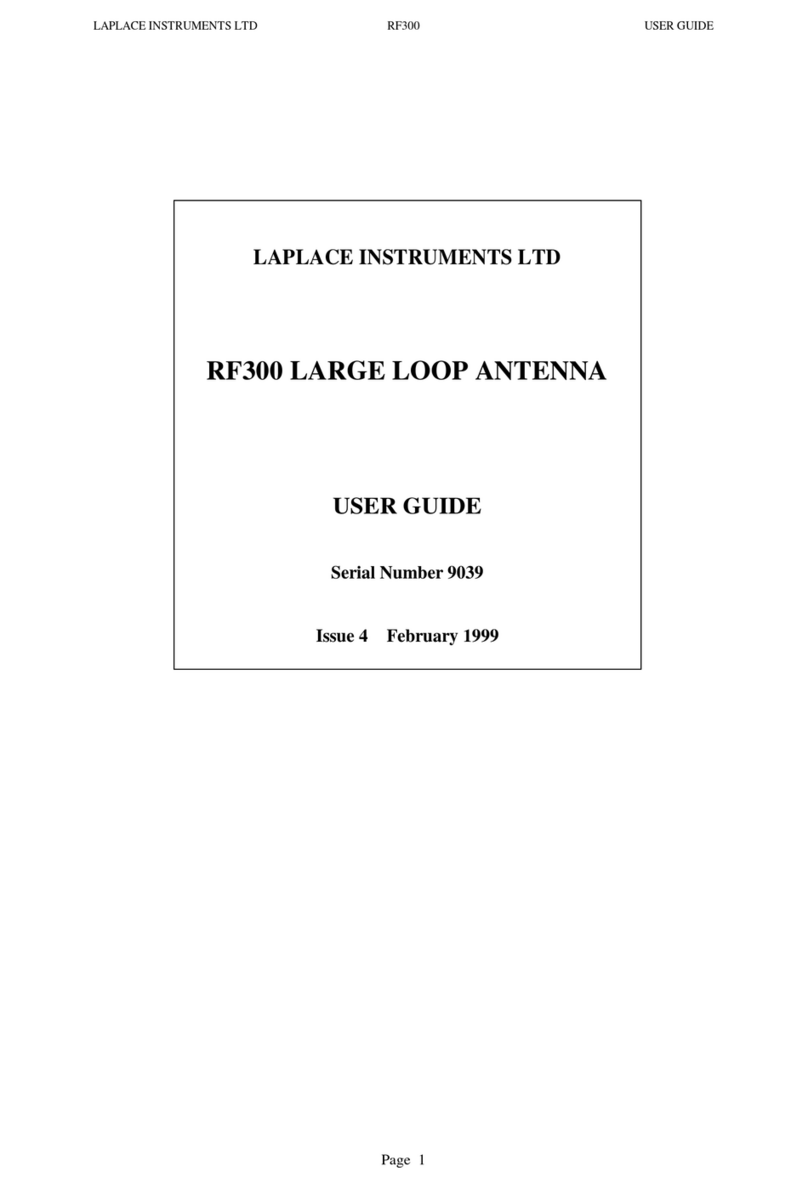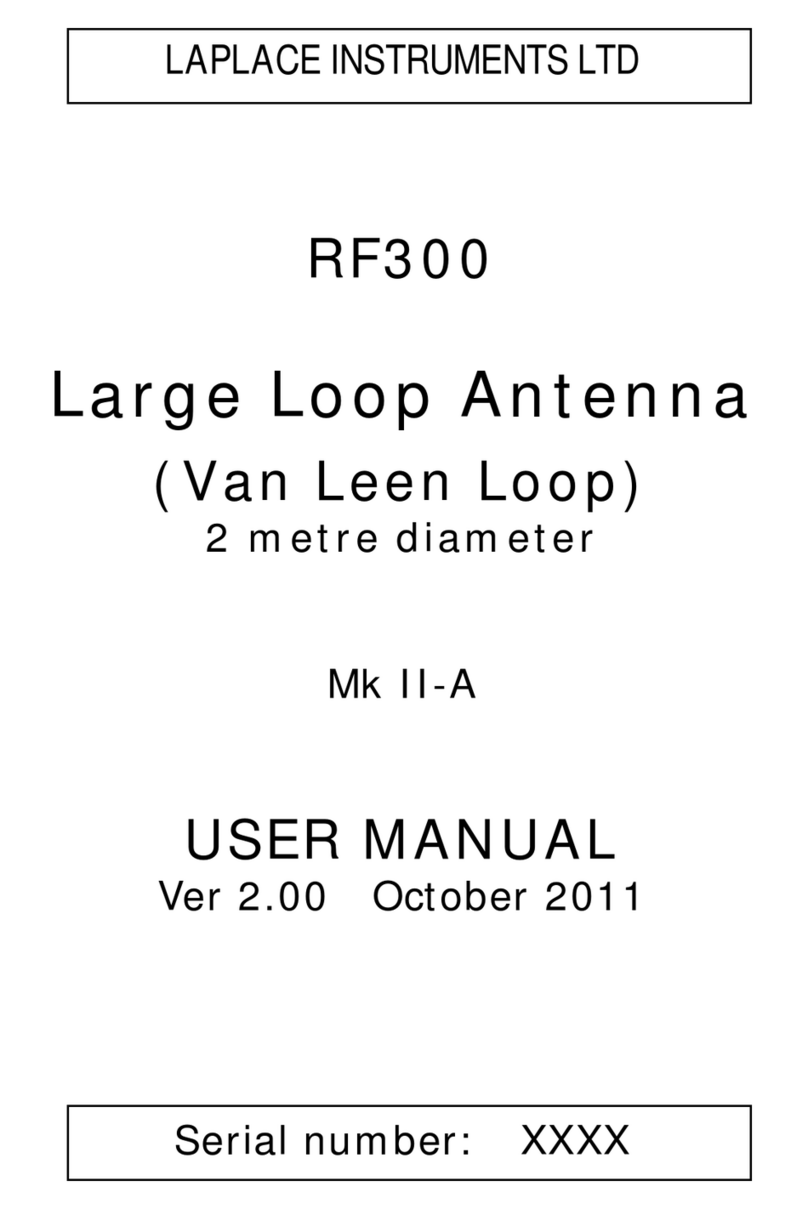RF200/500 user manual
3
1.0 Introduction
1.1 Antenna Background
Formeasurementoffield strength (far field emission level)an antennais required
which will actas atransducer, convertingfield strength (mV/m)to mVsignals output
down acoaxcable.
Antennas to cover thewidefrequencyranges required bythelegislation are notsimple
devices!Thestandards call fortheuseofa‘tuned dipole’. Whilstthis is simpleto
manufacture and produces aeasilydefinableoutput, it will onlywork atone
frequency, thetuned frequency. Dipoles are tuned byadjustingthelength oftheir
elements. Forserious emissions measurementwork, theconstantretuningofthe
antennaforeach peak ofinterestis timeconsuming, hence theintroduction of‘broad
band’antennas thatcover awidespectrumwithouttheneed foranyretuning. These
includelogperiodic, bi-conical, bi-logand other specialisttypes. All suffer from
variation ofsensitivitywith frequencyand need acorrection chartso thatthe
appropriateadjustmentcan bemadeto thespectrum. This correction chartis called
theantennafactor.
TheLaplace RF200 broadband antennahas arelativelyripplefree antennafactor
characteristic, closeto theoptimum.
Iftheantennais used with theLaplace EMCanalysers and theEMCEngineer
software, selection oftheRF200 itemin theinputmenu automaticallyapplies the
RF200 antennafactorcorrection to thespectrum.
1.2 Dipoleorbroadband antenna, whichto use?
EN50022 specifies thatatuned dipolebeused as theantennaforradiated emissions
testing. Thedipoleis abasicstandard that, atits tuned frequency, has an easily
definableoutputvs field strength characteristic. Dipoles are tuned byadjustingthe
length ofeach elementto be¼wavelength long. Ifmeasuringtheemissions froma
productover awidefrequencyrange, this is tedious, timeconsumingand is asource
oferror. Broadband antennas haveaknown responseover awiderangeof
frequencies and need no adjustment. Theresponseis notflat, and all broadband
antennas should besupplied with an ‘antennafactor’ curve. This is aplotof
sensitivityvs frequencyover thefull workingrangeoftheantenna. TheRF200 has a
workingrangeof30MHzto 1GHzand thus matches therequirements oftheEN
standards.
TheRF200 maybeused with anyanalyser orreceiver buttheSA1020 pre-amplifier
should beused to ensure thatthecharacteristics oftheantennamatch thepublished
data.
Basically, you need theBroadband antennaifit is necessaryto measure absolutefield
strength with areasonablelevelofconfidence and havean effectivetestsite, free of
reflections.
NotethattheantennafactorfortheRF200 is included in theSA1000 software.
This antennameans thatyou can cover thewholeradiated emissions frequencyrange
in onesweep. No need to adjustdipoles to each frequencyofinterest, no need to
switch between logperiodicand biconicaltypes halfwaythrough thetesting.






























